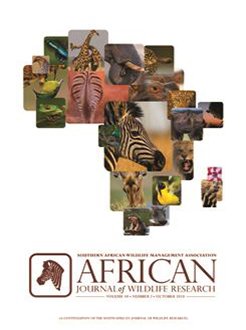Giraffe in southern Africa range across diverse anthropogenic land-use types and understanding their habitat requirements across these differently managed areas is key to their long-term conservation in increasingly complex multiple-use landscapes. We evaluated vegetation type preference, seasonal home range sizes, and daily distances travelled of two major southern giraffe populations in Zimbabwe – Hwange National Park (HNP) and Save Valley Conservancy (SVC) – by fitting a total of 27 solar-powered GPS satellite units. There was a difference in seasonal vegetation type selection as giraffe favoured bushlands and woodlands compared to other vegetation types. We used a continuous time movement modelling framework to generate 95% autocorrelated kernel density estimates for home range models and found significantly larger home ranges in HNP (573.9 km2; CI: 429.4–766.9 km2) compared to SVC (191.7 km2; CI: 131.5–279.5 km2). We also found differences in seasonal range sizes between study areas: SVC – (84.4 km2; CI: 55.8–127.5 km2) during the early dry season and (98.5 km2; CI: 65.1–149.1 km2) during the wet season; and, in HNP – (349.4 km2; CI: 181.6–672.2 km2) during the wet season and (637.9 km2; CI: 357.8–1137.0 km2) during the late dry season. Ranges varied significantly between sites (P < 0.01), with giraffe in SVC exhibiting significantly smaller ranges than in HNP across all three seasons (early dry: P < 0.01; late dry: P < 0.01, wet: P < 0.01). Daily distances travelled by giraffe were relatively consistent across both sites; however, seasonal variability was observed (P = 0.07). Whilst SVC giraffe daily distances travelled were relatively consistent across seasons, HNP giraffe in the wet season were travelled significantly less than in the early dry season (P < 0.05). Environmental changes appear to be the biggest drivers of variation amongst giraffe home ranges, vegetation type selection, and daily distances travelled between SVC and HNP. This was the first-ever in-depth study of giraffe spatial ecology in Zimbabwe and these results can better inform future conservation management in the country.
How to translate text using browser tools
18 September 2024
The Spatial Ecology of Southern Giraffe (Giraffa giraffa) in Hwange National Park and Savé Valley Conservancy, Zimbabwe
Jaco Olivier,
Alison J. Leslie,
Livingstone Hoda,
Michael B. Brown,
Julian Fennessy,
Daphine Madhlamoto
ACCESS THE FULL ARTICLE
continuous time movement modelling
Giraffa
home range
southern giraffe
spatial movements






